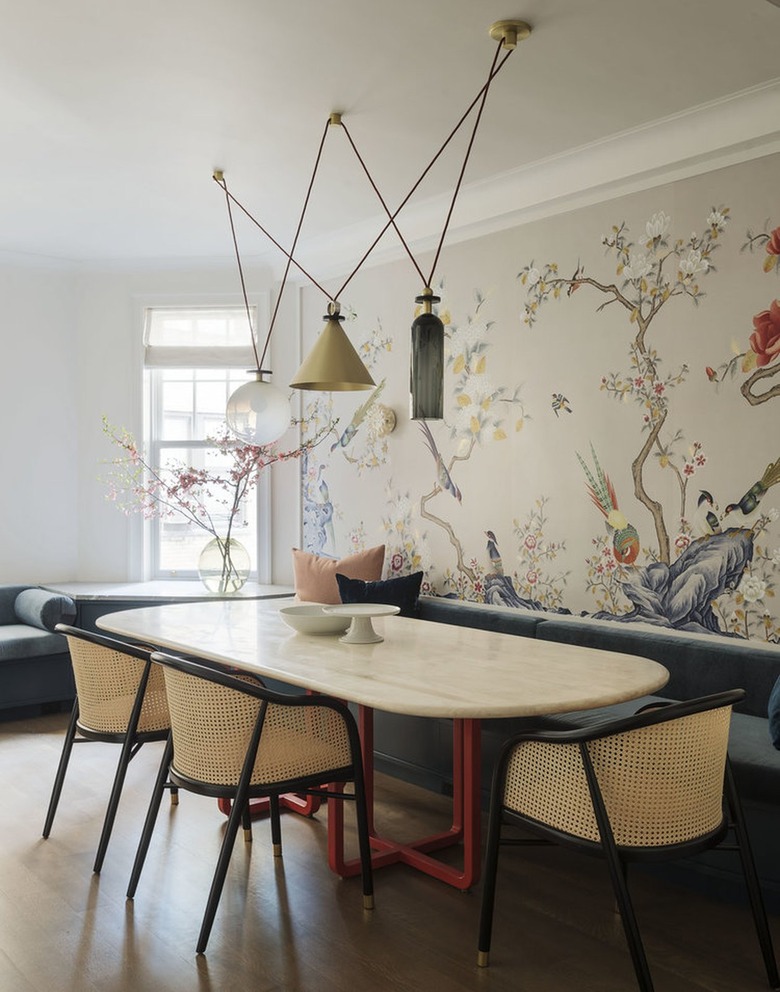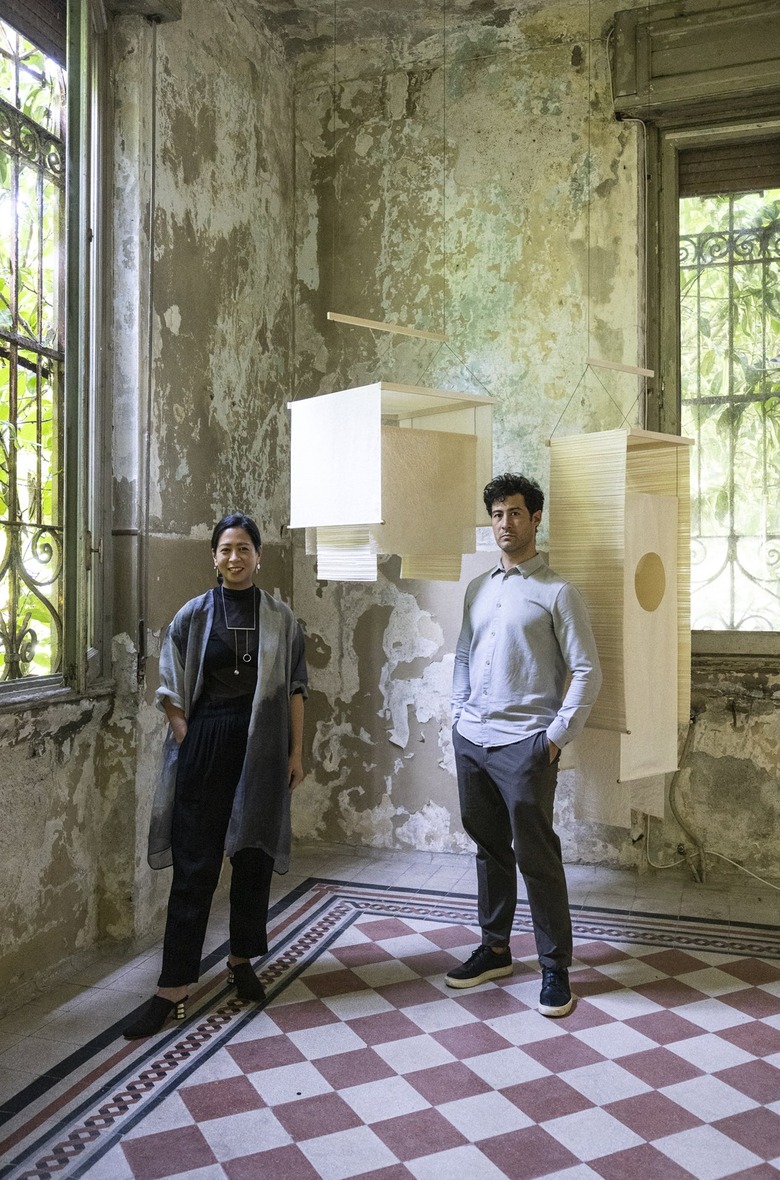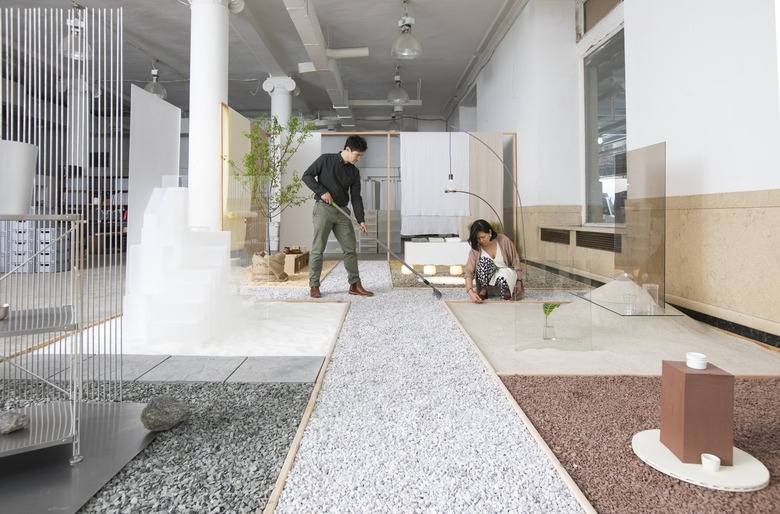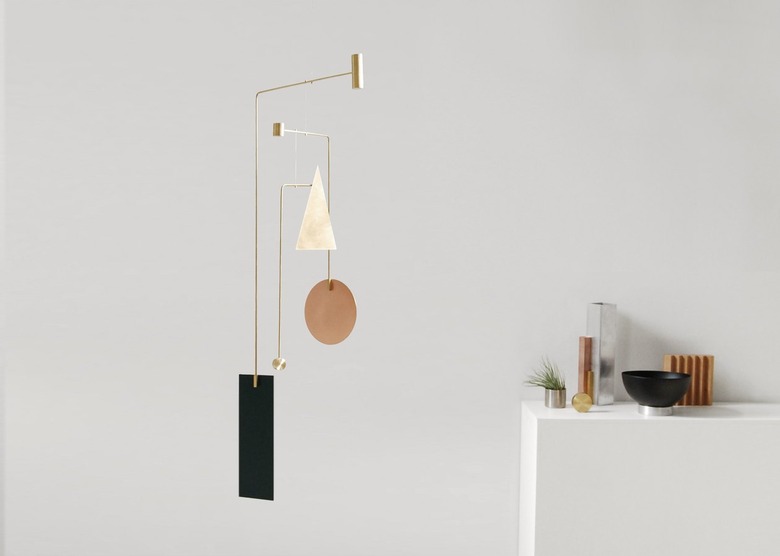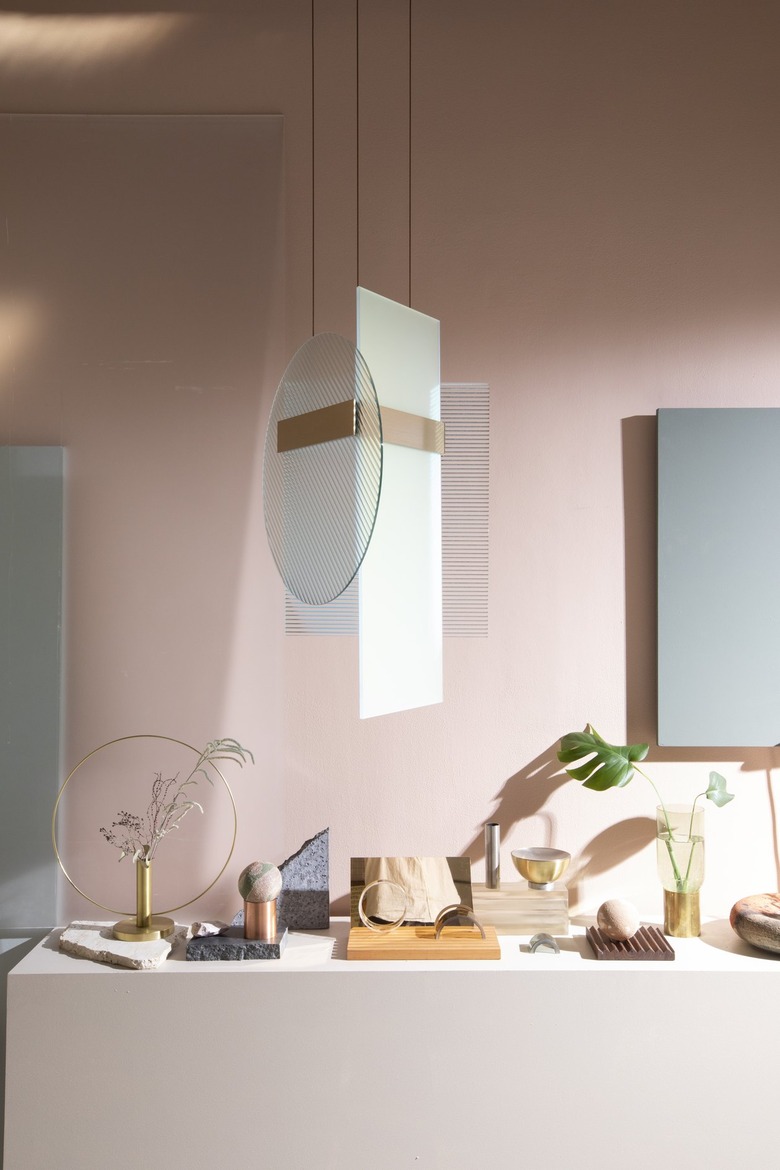Ladies And Gentlemen Studio's Lighting Doubles As Works Of Suspended Art
Founded by Jean Lee and Dylan Davis in 2010, Ladies & Gentlemen Studio is known for their imaginative and brilliant (in more ways than one) lighting, installations, and enviable collaborations with Roll & Hill, MUJI, Poketo, The Future Perfect, and Ariake. Lee and Davis first met two decades ago when they were students in the industrial design program at the University of Washington in Seattle. What may surprise their fans is that neither was initially interested in designing lighting or producing installations, not while in school nor when they started L&G Studio. Their first product was actually a small ceramic piggy bank they made in their garage.
How did L&G evolve from developing a modest everyday object to becoming an award-winning multidisciplinary studio, producing large-scale exhibits internationally? We spoke to Lee from their home in Rockaway Beach, New York, to learn more about the duo's creative journey.
Hunker: You recently returned from exhibiting your work at Milan Design Week. Can you share your experience?
JL: It was a great turnout. We had two separate shows. One was at Alcova [for This America Design exhibit] and the other one was Cipango: Japan Reimagined in a residential apartment unit. We were shown alongside a Japanese furniture brand called Ariake and another brand [we have worked with] called Origin Made. [The latter is] our friend's brand and company in which they work with Portuguese artisans and craftsmen, and then work with different designers to design the product.
Hunker: You've had incredible collaborations over the years, including the 2018 MUJI Materials Garden Installation. How do such collaborations come about?
JL: Cumulatively, all our experiences usually happen through word of mouth or meeting people, and then opportunities just happen. It's really hard to pinpoint how MUJI happened. In some ways it was sort of an anomaly ... our friend does their PR and marketing, and MUJI wanted to do something during New York Design Week because they had a temporary storefront space. We got paired with them and lucked out. It is still one of those projects that I can't believe happened. They never work with any American designers, let alone doing something of that scale in the U.S.
Hunker: Let's go back in time to your "first collaboration" that eventually led to Ladies & Gentlemen studio, when you and your partner, Dylan Davis, met in the industrial design program at the University of Washington in 2002. Do you remember the day you met?
JL: We were in the same class. I think it took some time to become friends. Over time, working at the studio and on projects, you end up building a lot of camaraderie between friends ... We also got paired to do some projects during class ... A friend of ours just nudged us [together] because both Dylan and I are kind of shy or more like introverts. The first impression I had of Dylan was that he was more into doing his own thing and more of a recluse. Thanks to friends, they really broke down the barriers around us.
Hunker: Was lighting part of your focus when you were in school or is that something that came about later?
JL: I personally was really into kid's design and textiles, like clothing, and Dylan was more into electronics and furniture. We sort of fell into lighting because when we started our studio, we decided to do an exhibit at Sight Unseen, when they used to pair retail storefronts with designers during New York Design Week in 2012. We came up with some pendant lighting, which is the Aura light, a bulb with a ring around it. We got paired with a women's clothing brand called Zero + Maria Cornejo and the light is still there in NoHo.
Hunker: What products were you producing initially?
JL: Before that was much more tabletop home accessories. The first product that we launched was a very minimal piggy bank, but with chalk surfaces ... We started to take orders and [the business] just grew from there. We also had serving-ware with color-dipped enamel handles and then a serving tray with minimal mixing of materials: wood, metal, and marble.
Lighting was something new; we didn't realize it was going to become such a dominant category for us. I think the reason why we end up doing a lot of lighting is because there's a lot of room to really explore different materials and forms, and you also can get quite technical in terms of figuring out the lighting quality and the feeling, just like the atmosphere.
Hunker: How do your lighting designs typically develop?
JL: There's not one approach to how we start something. For example, like the Aura light or the Kazimir light, which has different glass shapes or panels, we just had materials and then started moving things around, stacking them, putting the flashlight through it, and then working around it. Then scaled it up.
Now it's still the same kind of lineage and approach [when it comes to] how we look at materials, which is looking at the spirit of the material and how do we express the essence of that, but in creating a composition around it. Then we really explore the texture. How do we manipulate the texture of the different materials? We crinkle the silk and then make it feel more like paper ... We let the linen do its own thing. And the cotton ... [we're] exploring different textural experimentation and forms of expression again.
Hunker: In a past interview you talk about "respecting materials." Is that what you mean by trying to capture the essence or avoid over-manipulating?
JL: Yeah, just let those materials be. We're not really doing too much to it and appreciate what it is. But then on another layer, how we put it together creates an overall sense of feeling. It's not about pushing what materials can do; it's not like grinding it up and doing some crazy things.
"There's a purity to our approach. I think also during COVID there was a lot of contemplation. What does design really mean for us and also in the bigger context of everything? We're not changing worlds per se. But if we could think about what we could offer, what we could create, if it could bring a little moment of respite or joy or beauty into the world, maybe that's the contribution we could give." — Jean Lee
With fabric, it's something that we want to elevate. An assembly material doesn't have to be fancy material, like glass or metal, in order to have that elevated feeling as well.
Hunker: You often share your adventures and design explorations online. It's nice that you remind people that you need to take time to do that. What's exciting you right now?
JL: Because we live in Rockaway Beach, New York, now, surfing! We were in the middle of Brooklyn for five years and then COVID hit. We randomly decided to go out to Rockaway for a long weekend and then started learning there was a whole new world out there. We got into surfing and that's been really refreshing because we've been so embedded in design, furniture, everything.
It definitely shifted our way of thinking in terms of how we design, and the Veil lighting really stems from that process as well, connecting with nature too. It was of course inspired by Eastern and Japanese architecture and the idea of the open window [when] the wind comes through, so it's like the breeze and you see the layers. You see the light coming from outside in or inside out, and then during the day it creates different sorts of visual layers. I've always been fascinated with how objects could interact with nature.
Hunker: We've talked to many designers who run businesses with their partners. What's your and Dylan's secret to success?
JL: Communication is key. Not taking things too personally is key. Have a sense of humor. I think also respecting each other's skill sets is really important. Being open to express what your intentions are. I think if we are aligned in our intentions or what we want to do down the line, whatever it is, then whatever hurdle we run into, we can make it work. When I think about how Dylan and I approach designing, the process is the same: a deep curiosity for understanding something.
